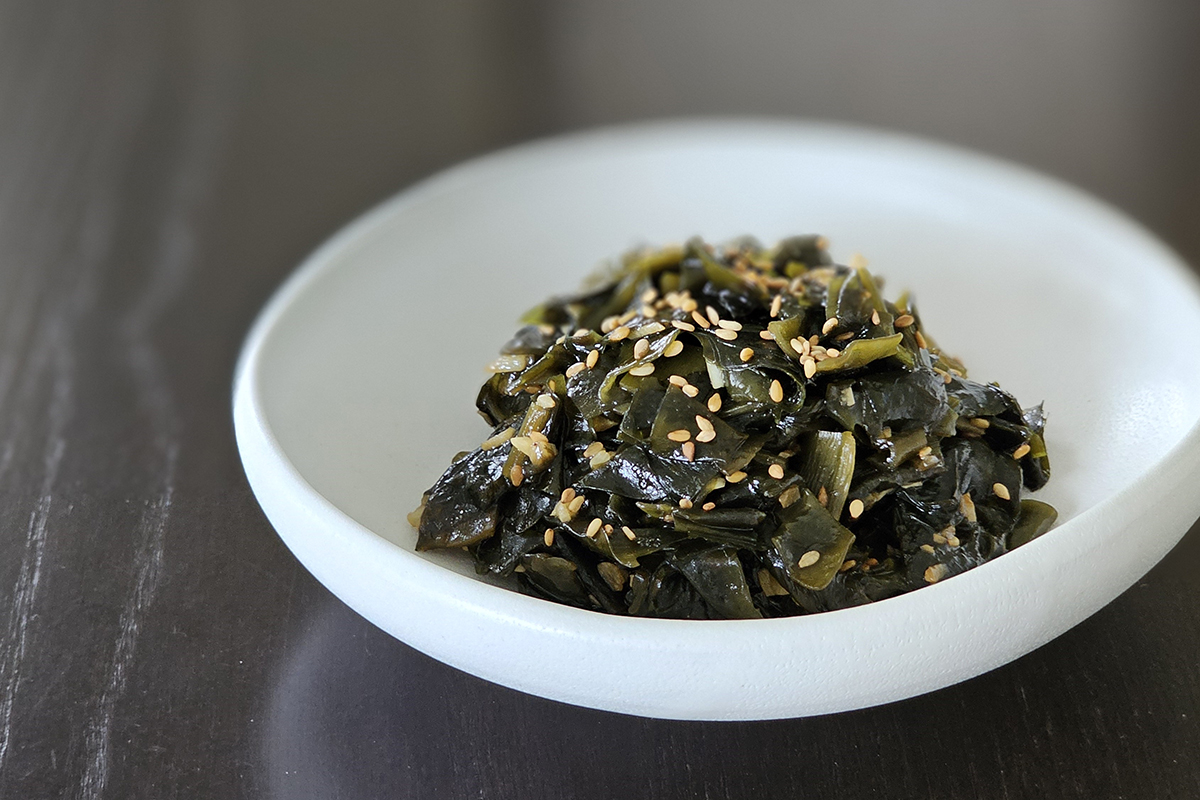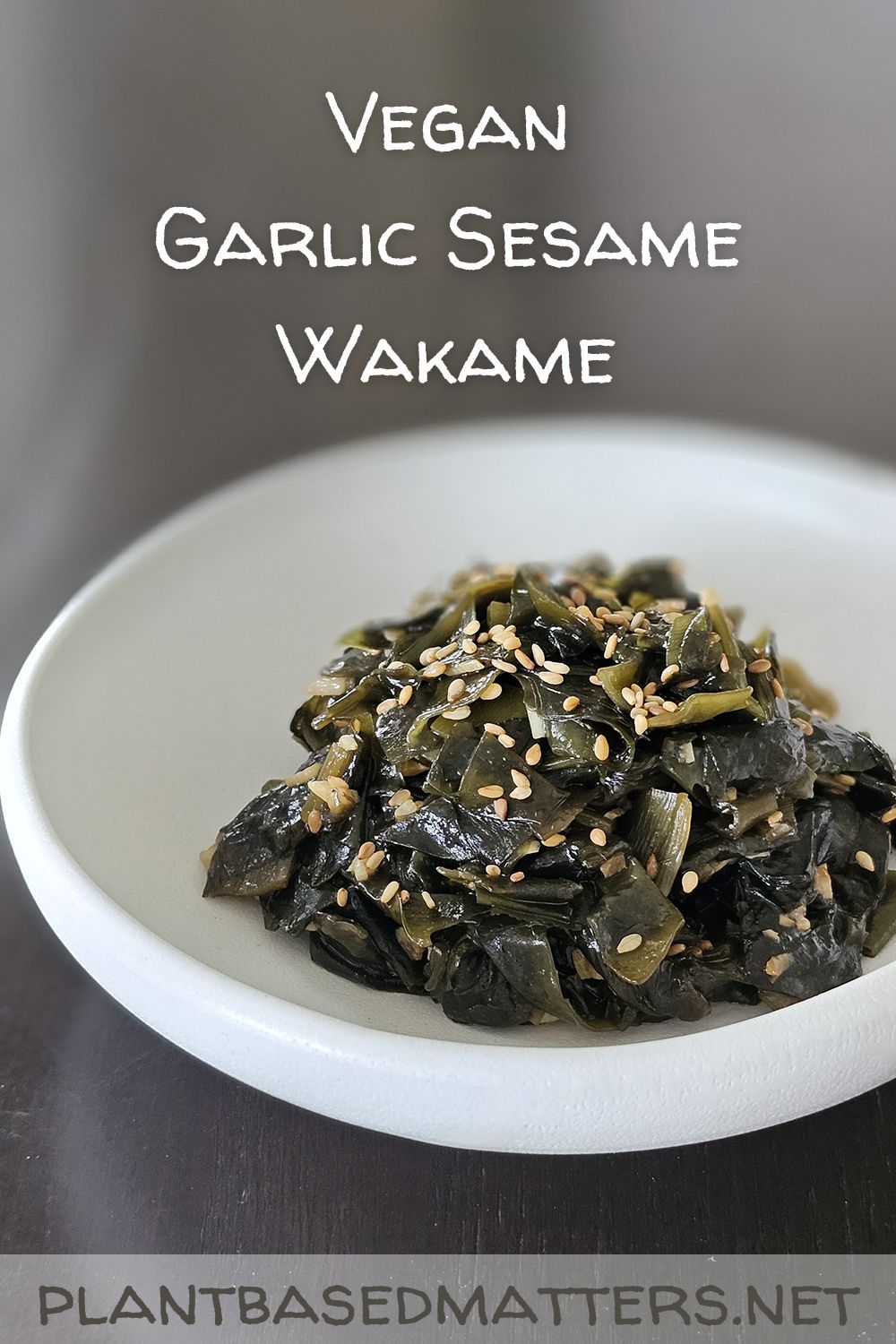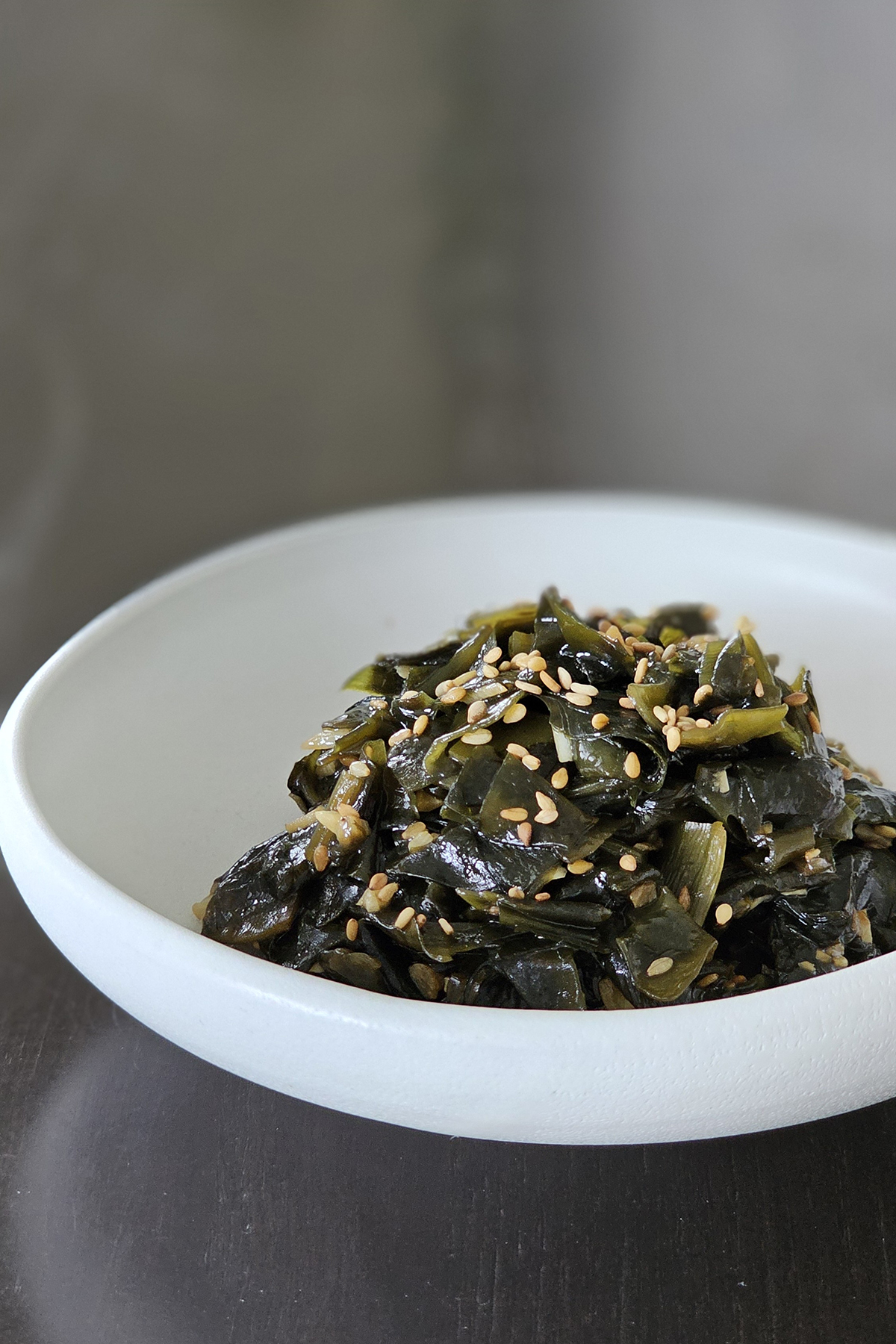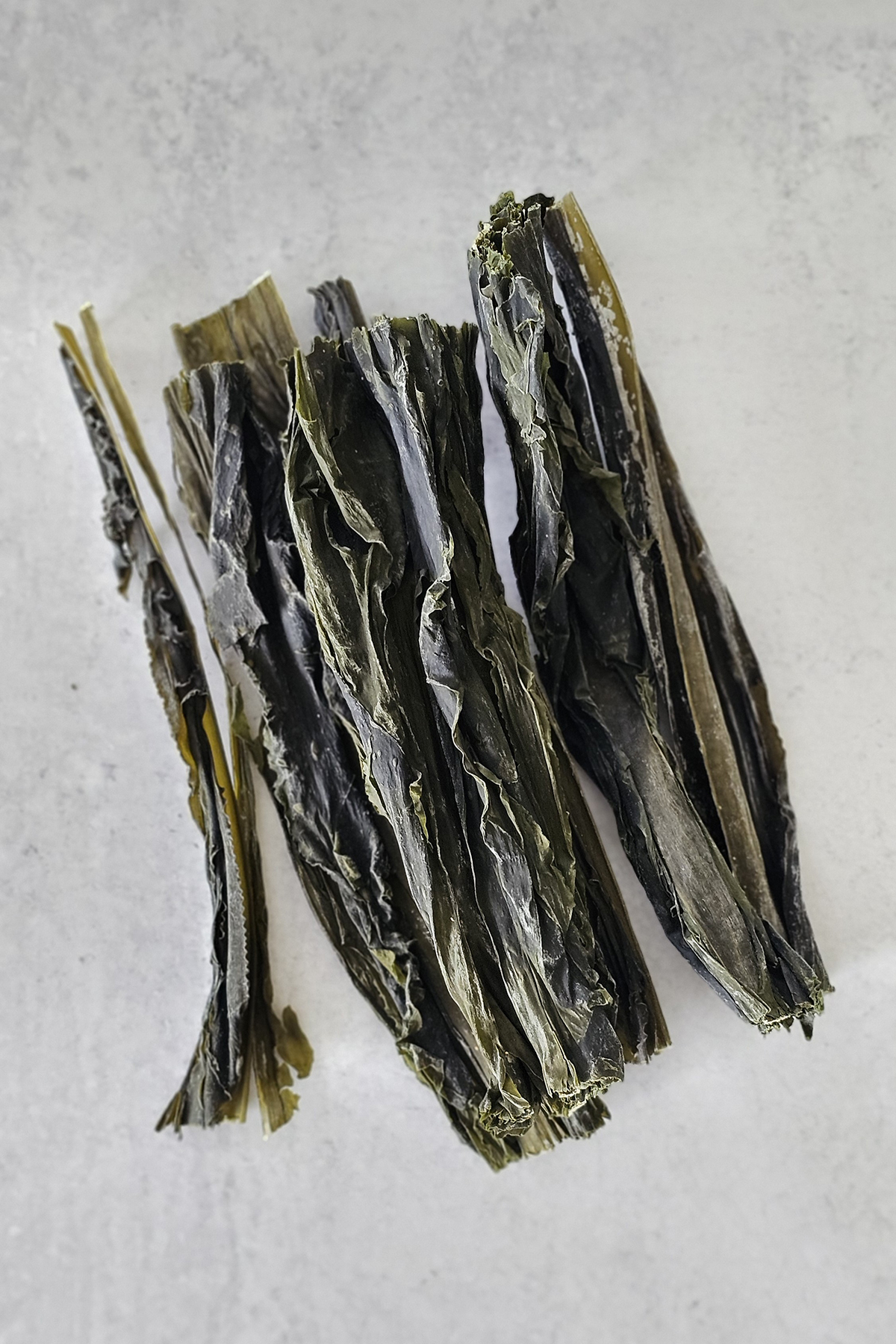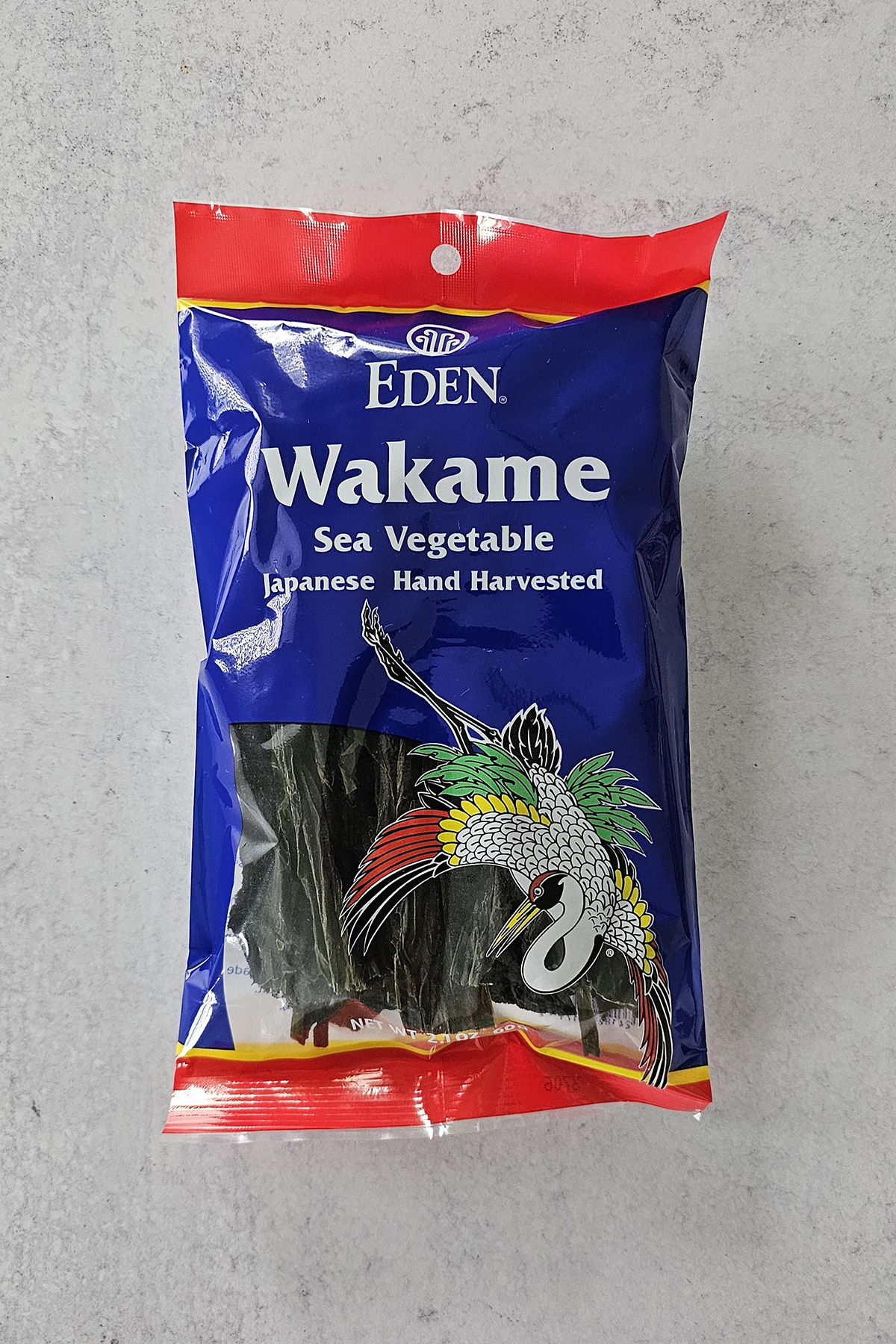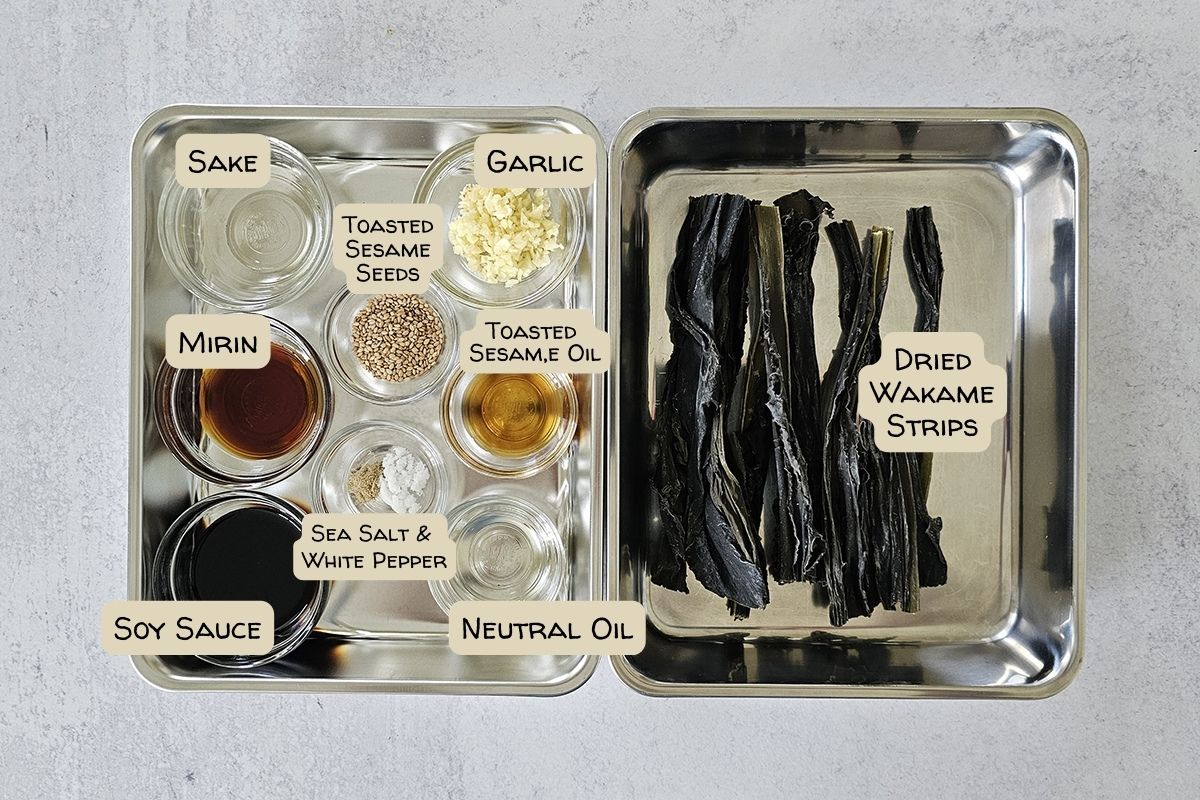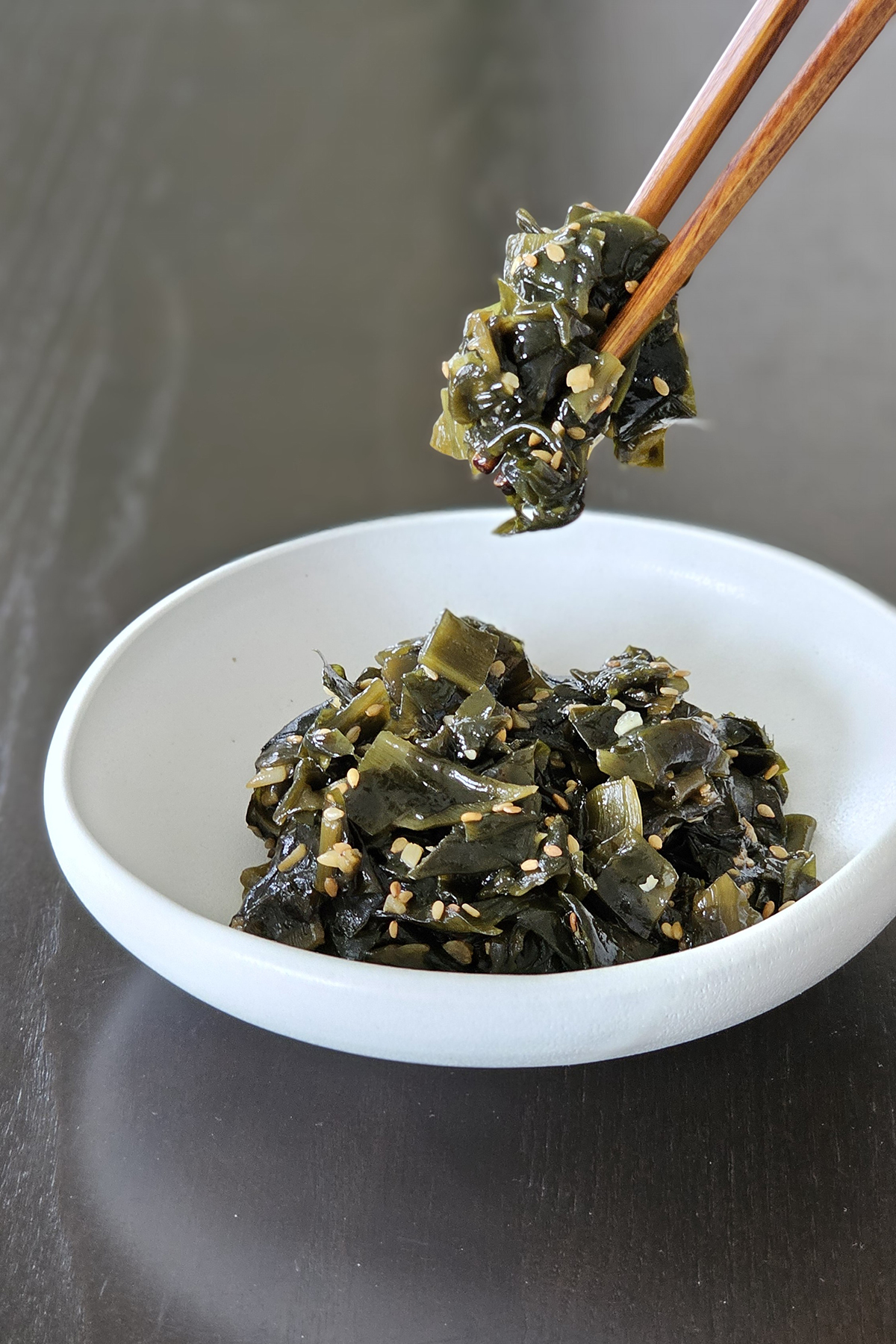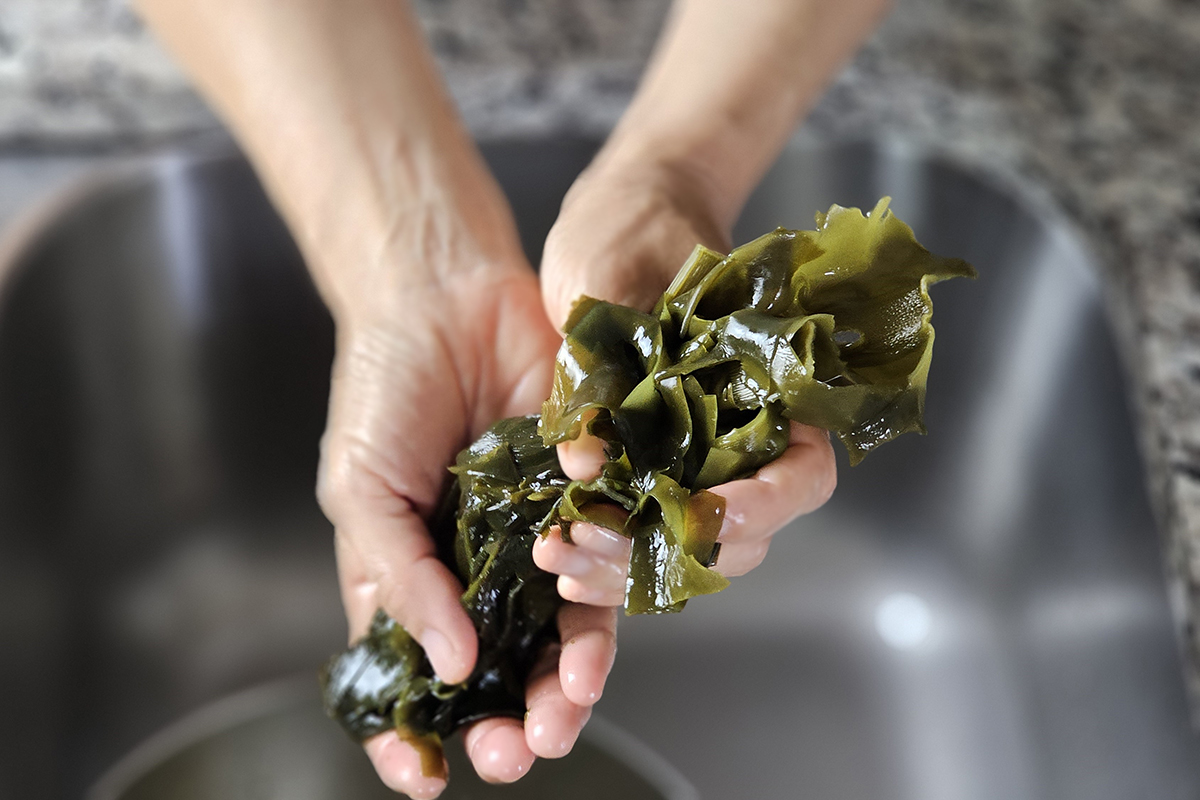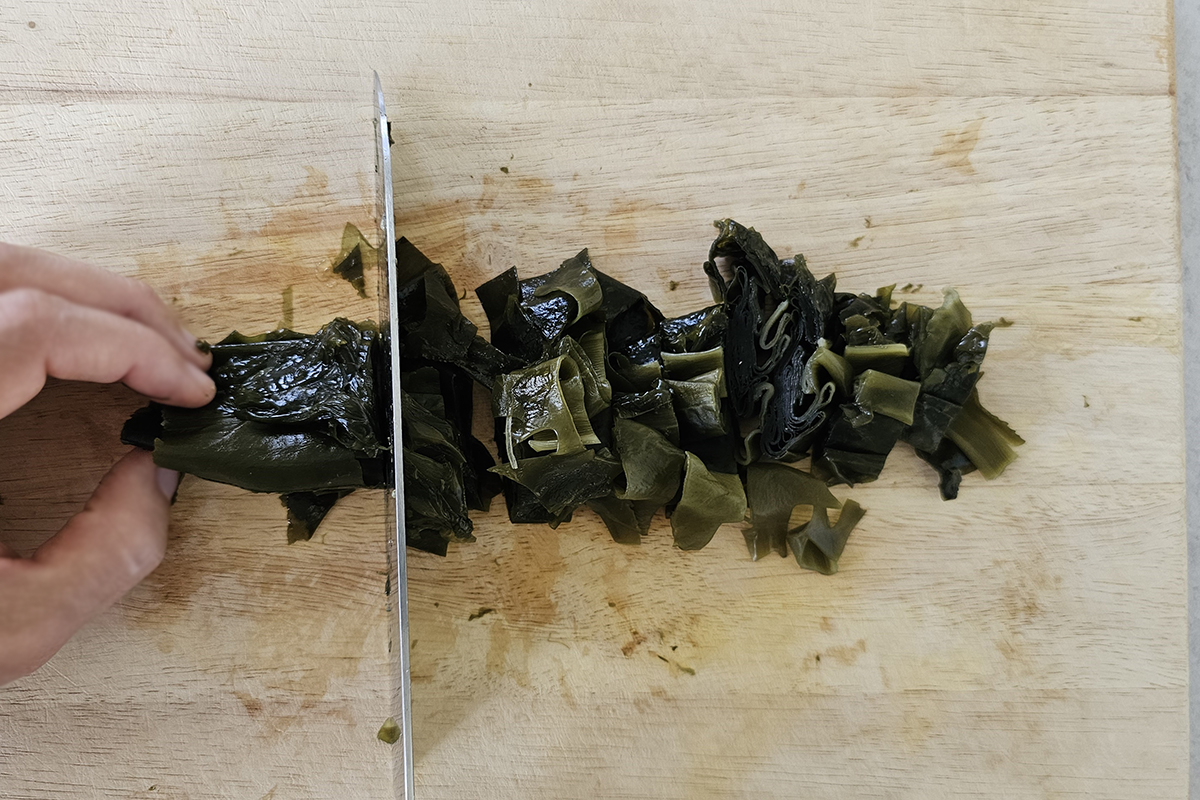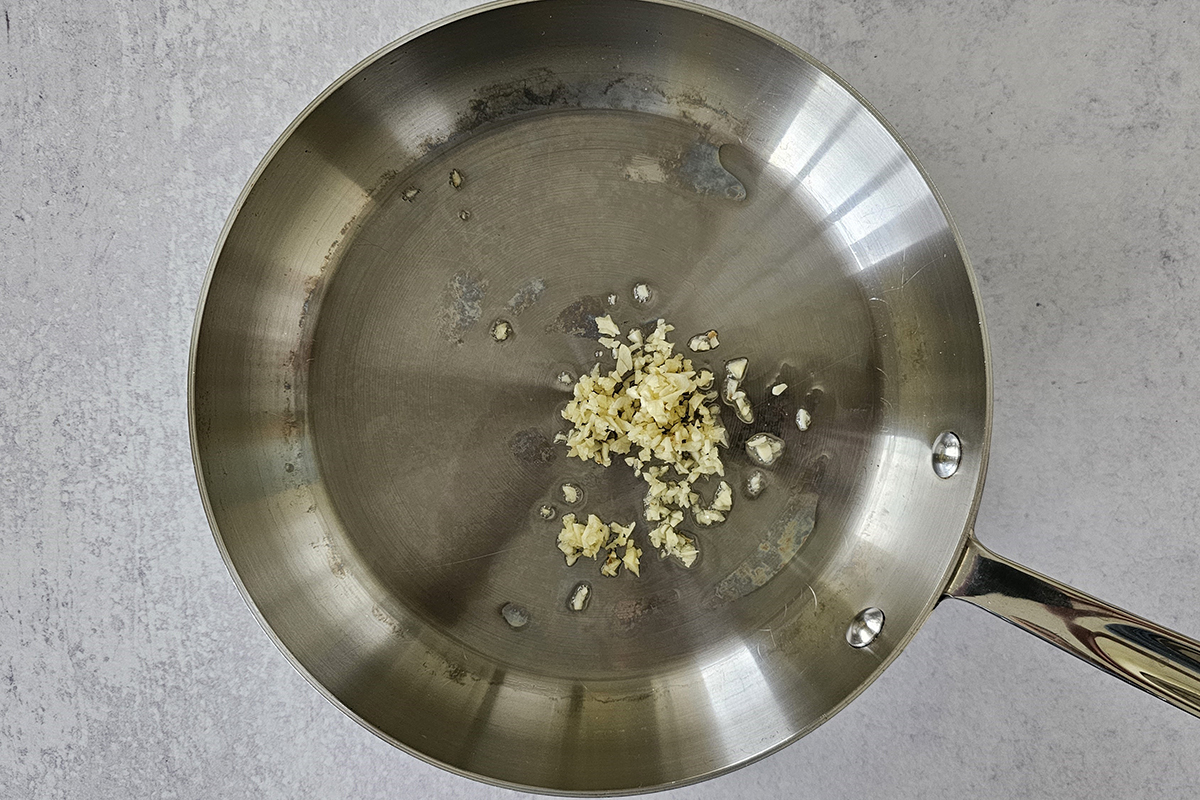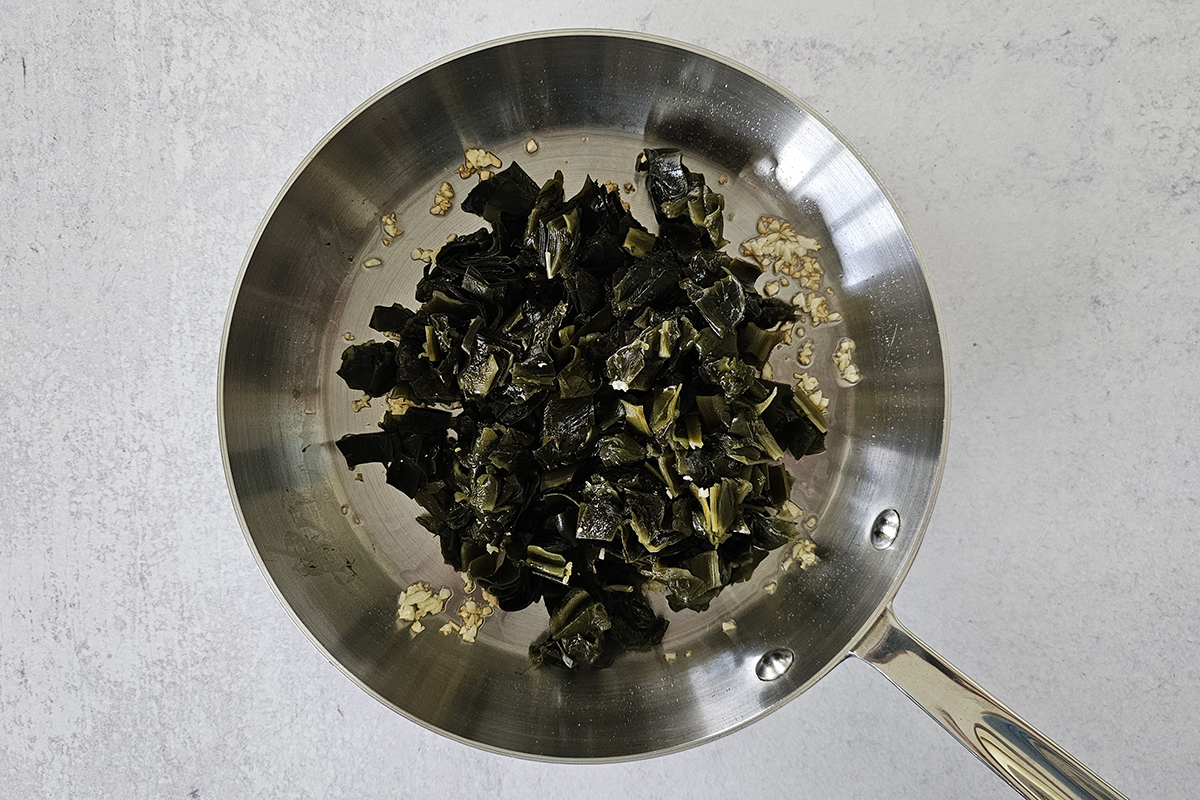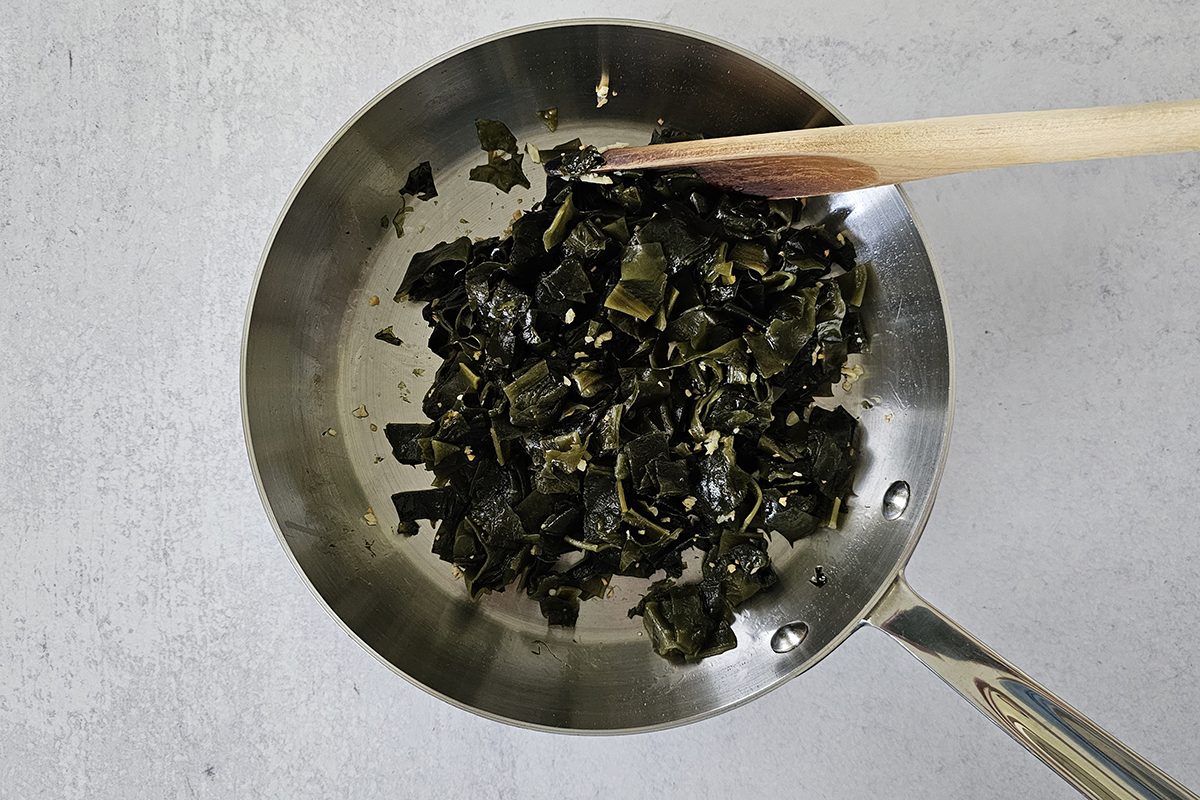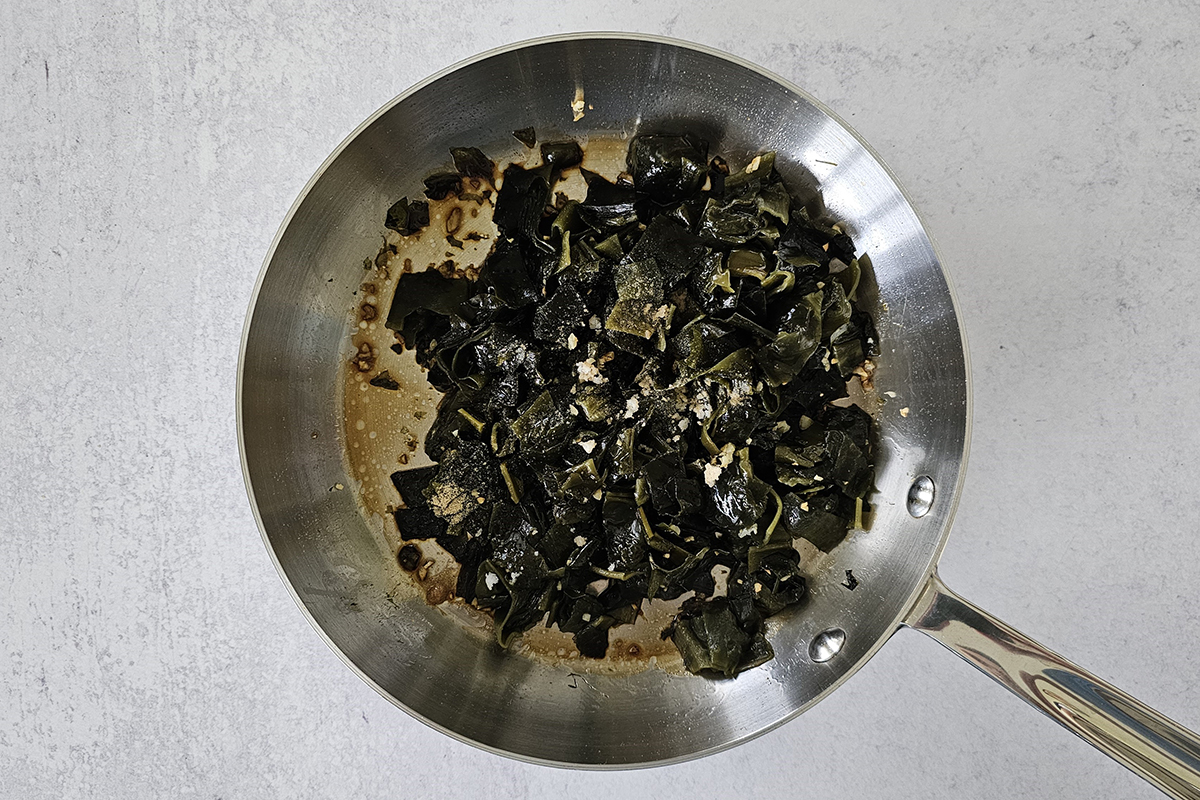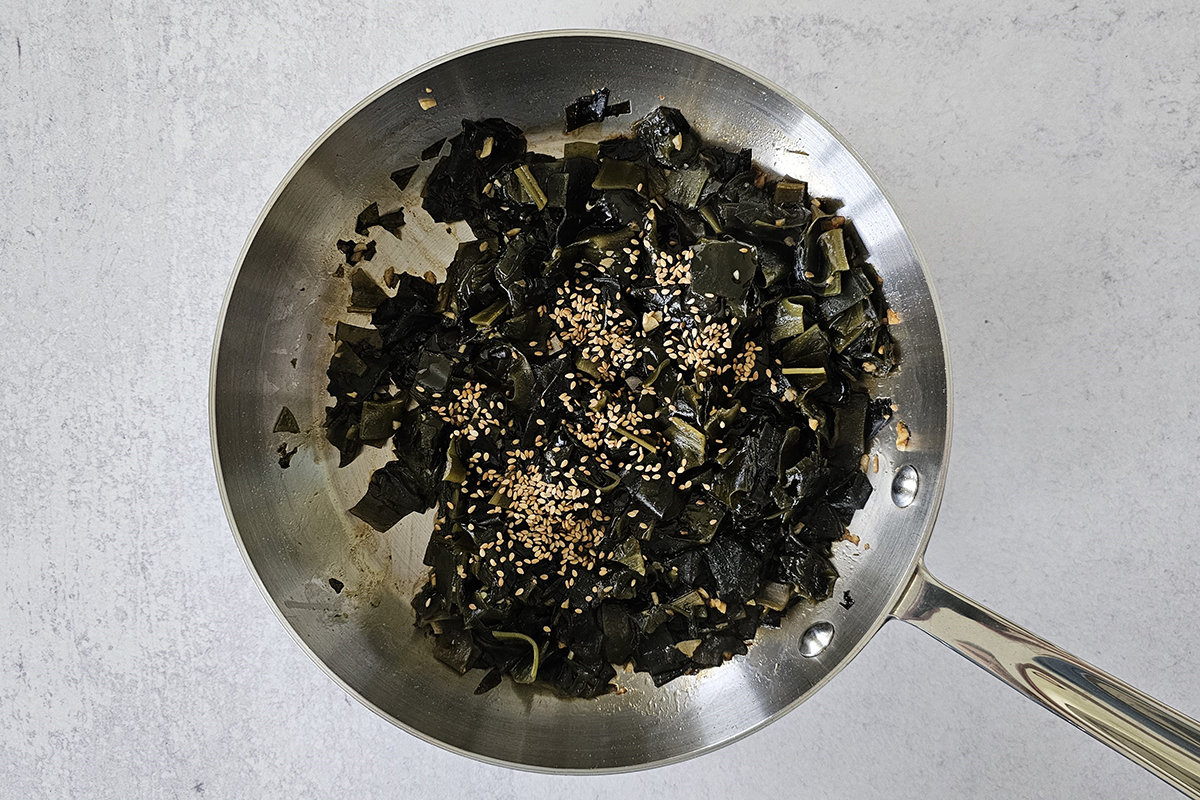Last Updated on July 29, 2024
Vegan Garlic Sesame Wakame is a sauteed Japanese seaweed that cooks in no time! It’s a great side dish with a bowl of rice.
Vegan Garlic Sesame Wakame
This recipe is inspired by my mom’s food that I grew up eating.
Pan-frying seaweed may sound unusual to you but it’s actually delicious and easy to do. My mom would prepare a few wakame dishes that are not salad or soup, and the Garlic Sesame Wakame is one of them.
The key ingredient is clearly the wakame!
What’s Wakame?
Wakame is a type of edible seaweed that is common in Japanese cooking.
We use wakame in miso soup, salad, rice, soba, udon, and ramen noodles. The type of wakame seaweed sold in stores (in the US) are dehydrated and comes either in strips or cut (chopped). All dehydrated wakame is very easy to prepare. You just need to soak in water and it’s ready to use!
In this recipe, I use strips. Typically, strips are more cost effective than the cut one.
Cut wakame is perfect and convenient for soups and noodles when you want to add a little bit of it. On the other hand, wakame is the main ingredient for this recipe. That means it needs a substantial amount of wakame to make it a dish so using the strips makes more sense.
Good wakame shouldn’t taste or doesn’t have a strong (unpleasant) sea flavor! I use this wakame from Eden Foods.
Is Garlic Sesame Wakame Vegan?
Yes! Garlic Sesame Wakame is naturally vegan without tweaking.
No gimmicks, no substitute of anything. It’s made with all real and simple ingredients!
Ingredients
- Dried wakame seaweed strips
- Neutral oil
- Garlic
- Soy sauce (or tamari)
- Sake
- Mirin
- Sea salt
- White pepper (or black pepper)
- Toasted sesame oil
- Toasted sesame seeds
10 ingredients is all you need to make this recipe!
Taste of Vegan Garlic Sesame Wakame
Vegan Garlic Sesame Wakame is a mouthwatering dish from the aroma of garlic and toasted sesame oil!
Who wouldn’t love the smell (and of course the taste) of garlic cooked in oil? With the combo of toasted sesame oil and toasted sesame seeds, the dish has all the Asian food craving trigger elements!
You may find it tasting quite similar to Korean food. Whether you eat it as Japanese or Korean dish, here is how I would eat this!
How to Serve
Just like any other Japanese side dishes, it’s best serve with a bowl of rice, white rice or brown rice! You can also eat as a side dish for ramen noodles.
For the serving temperature, it can be:
- Hot
- Room temperature
- Chilled
Personally, I enjoy eating it at all different temperature and they’re all good in their own way.
How to Make Vegan Garlic Sesame Wakame
Prep the Ingredients
1. Place dried wakame seaweed strips in a bowl. Add water to cover them and soak for 5 minutes.
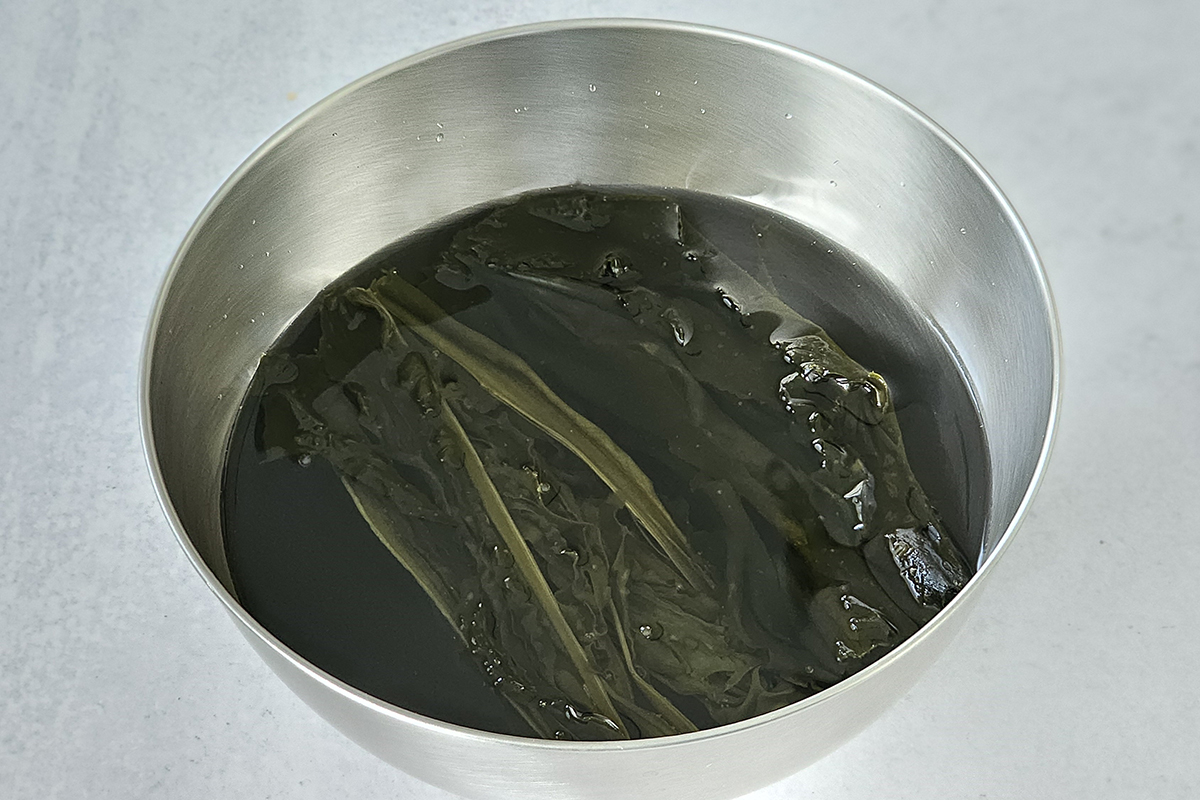
2. Discard the soaking water and fill the bowl with water again to rinse off the saltiness.
Drain and gently squeeze the water off.
Cut the wakame into bite sizes and set it aside (cut carefully, it may be slippery.)
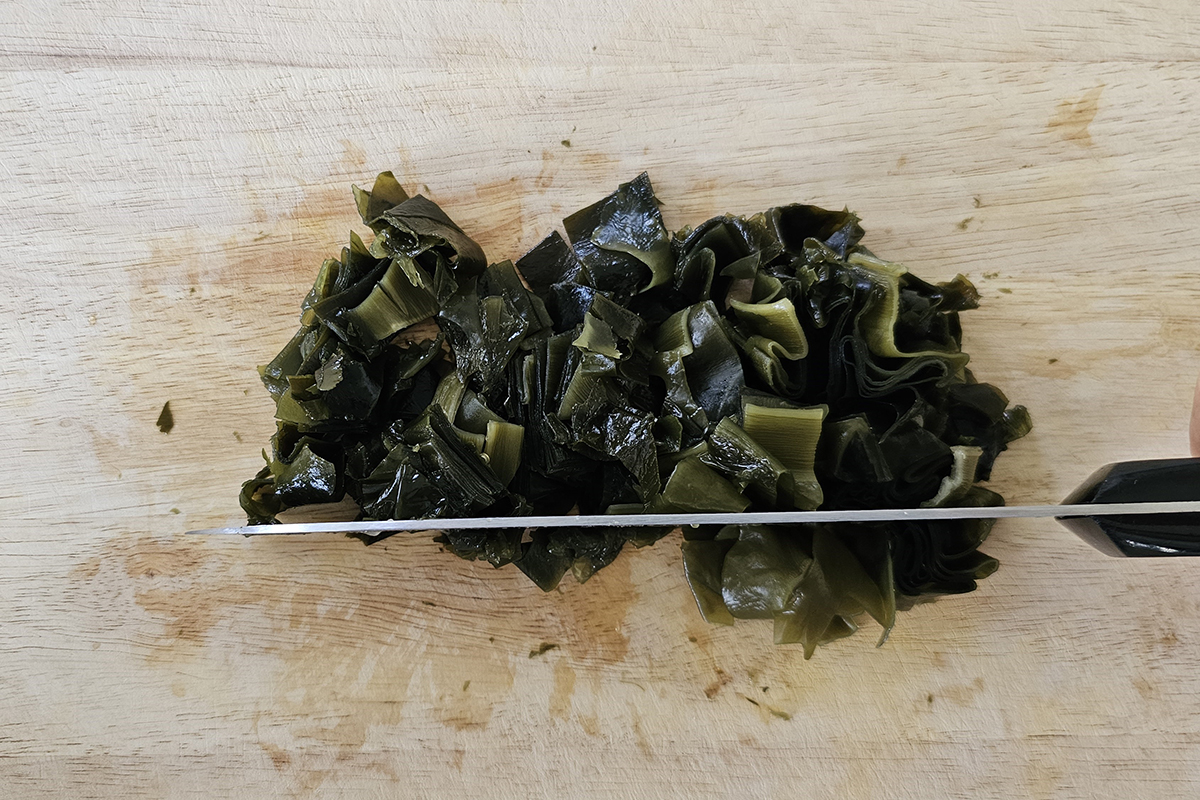
3. Heat up a small frying pan at medium heat. Add neutral oil and garlic. Cook for a minute or so until fragrant.

4. Add the wakame and stir for 30 seconds.
Next, add soy sauce, sake, mirin, sea salt, and white pepper.
Cook for another minute or so until the alcohol evaporates.
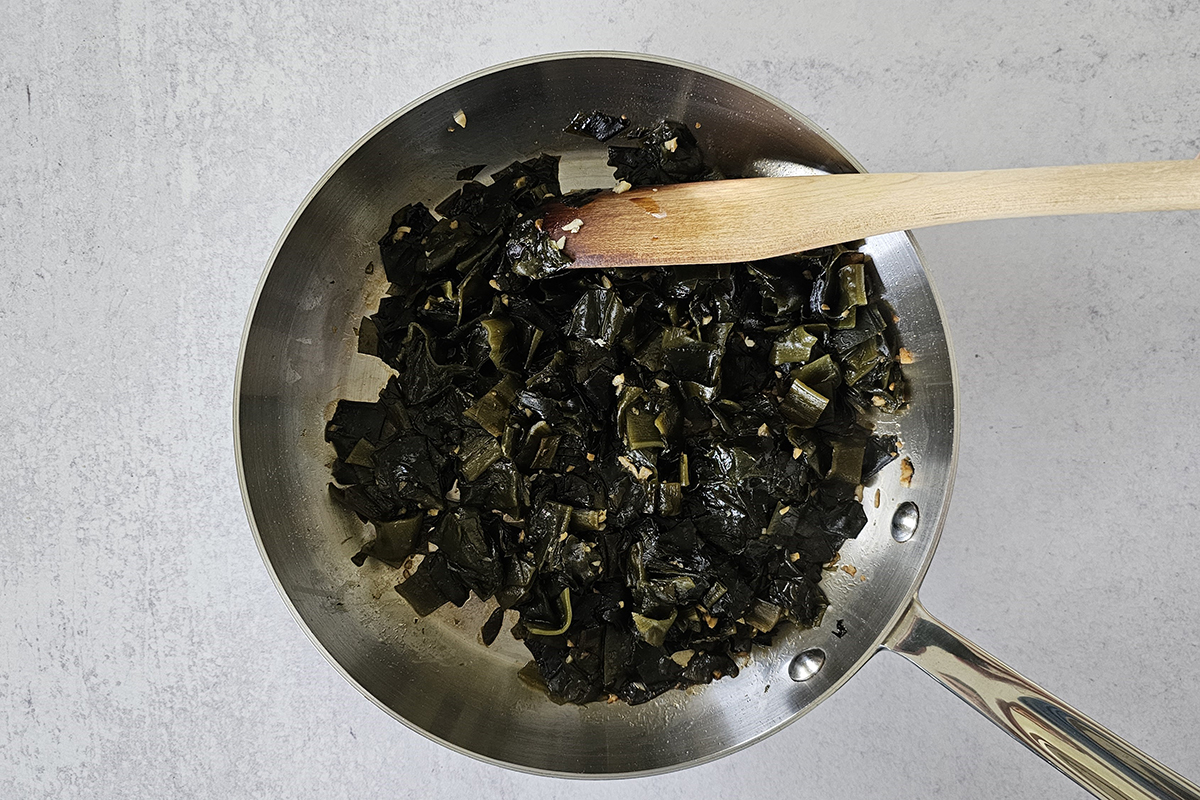
5. Lastly, add toasted sesame oil and toasted sesame seeds. Then, give a quick stir.
Vegan Garlic Sesame Wakame
Ingredients
- 1 oz dried wakame seaweed strips
- 2 tsp neutral oil
- 2 cloves garlic minced
- 1 tbsp soy sauce or tamari
- 1 tbsp sake
- 1 tbsp mirin
- 1/4 tsp sea salt adjust to taste
- A few dashes of ground white pepper or black pepper
- 1 tsp toasted sesame oil
- 1 tsp toasted sesame seeds
Instructions
- Place dried wakame seaweed strips in a bowl. Add water to cover them and soak for 5 minutes.
- Discard the soaking water and fill the bowl with water again to rinse off the saltiness. Drain and gently squeeze the water off. Cut the wakame into bite sizes and set it aside (cut carefully, it may be slippery.)
- Heat up a small frying pan at medium heat. Add neutral oil and garlic. Cook for a minute or so until fragrant.
- Add the wakame and stir for 30 seconds. Next, add soy sauce, sake, mirin, sea salt, and white pepper. Cook for another minute or so until the alcohol evaporates.
- Lastly, add toasted sesame oil and toasted sesame seeds. Then, give a quick stir.
- Serve right away or later!
Notes
Wakame Seaweed
- Dried wakame seaweed can be found in strips or chopped.
- Dried wakame strips can be salty. It’s important to rinse off the salt after soaking (so you can control the saltiness to your preference.)
How to Serve
- It can be served hot, at room temperature, or chilled.
- It’s best to serve with a bowl of rice!
- Enjoy as a side dish for ramen noodles.
